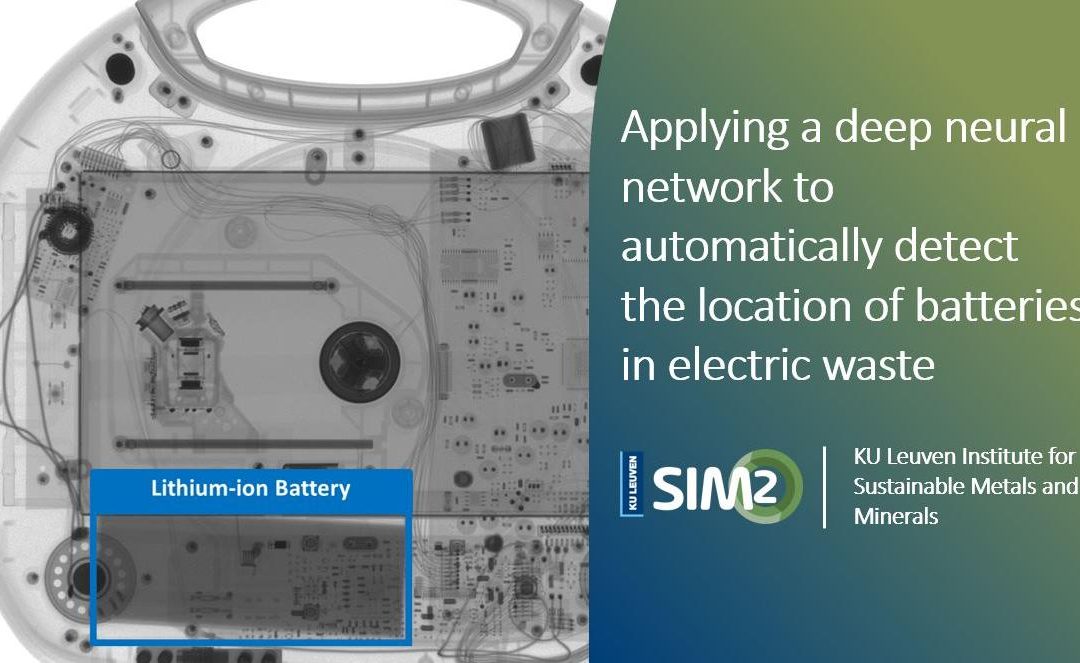Removing batteries from Waste Electrical and Electronic Equipment (WEEE) for separate recycling is becoming increasingly challenging. Therefore, researchers from the Life Cycle Engineering (LCE) research group (SIM² – KU Leuven) performed a study to capture X-Ray images of WEEE and apply a deep neural network to automatically detect the location of batteries and determine the battery type before treatment. With this information, improved treatment procedures become possible. The work was published in the journal Resources, Conservation and Recycling.
A bottleneck in the WEEE recycling process
The separation of batteries is a necessary step in the WEEE recycling process as batteries need to be separately recycled according to European legislation. Today, this procedure is mostly performed manually.
However, because an increasing amount of electronic devices arriving at the recycling plant contain snap fits or are glued together, it is becoming increasingly challenging for factory workers to first determine which devices contain batteries, and then open the devices and remove the batteries. Therefore, the procedure is becoming a bottleneck in the overall WEEE recycling process and the industry is searching for alternative procedures.
Capturing X-Ray images of the waste stream
To address this issue, the authors propose to capture X-Ray images of the waste stream before treatment and apply deep learning classification of battery-containing devices for sorting, and battery detection and battery recognition for separation.
X-Ray Transmission (XRT), which is most commonly known for applications such as baggage screening in airports and medical imaging, allows the creation of an image displaying the internal structure of the device. Thus, components such as the battery are visible on the image without being affected by outer damage and dirt.
Knowing the presence and location of batteries inside WEEE before treatment would drastically ease the sorting and separation procedure for factory workers and allow for automated procedures to be developed. Knowing the battery type before treatment is also essential information because some batteries need to be handled with more caution than others.
Study results
To test this approach, X-Ray images were captured of 532 electronic devices. Evaluation results on this limited dataset are promising, demonstrating a 91% true positive rate and only a 6% false positive rate for classifying battery-containing devices, a precision of 89% and a recall of 81% for battery detection, and an average precision of 85% and an average recall of 76% are to distinguish amongst six battery technologies.
These results provide clear guidelines and methods for further development. Future work will need to be performed to determine whether the approach is economically viable on an industrial scale in combination with novel systems that make use of the provided information to (semi-) automatically sort battery containing products and dismantle batteries. These systems are currently under development within the research group.
Full reference of paper
Wouter Sterkens, Dillam Diaz-Romero, Toon Goedemé, Wim Dewulf, Jef R. Peeters, Detection and recognition of batteries on X-Ray images of waste electrical and electronic equipment using deep learning, Resources, Conservation and Recycling, https://doi.org/10.1016/j.resconrec.2020.105246

